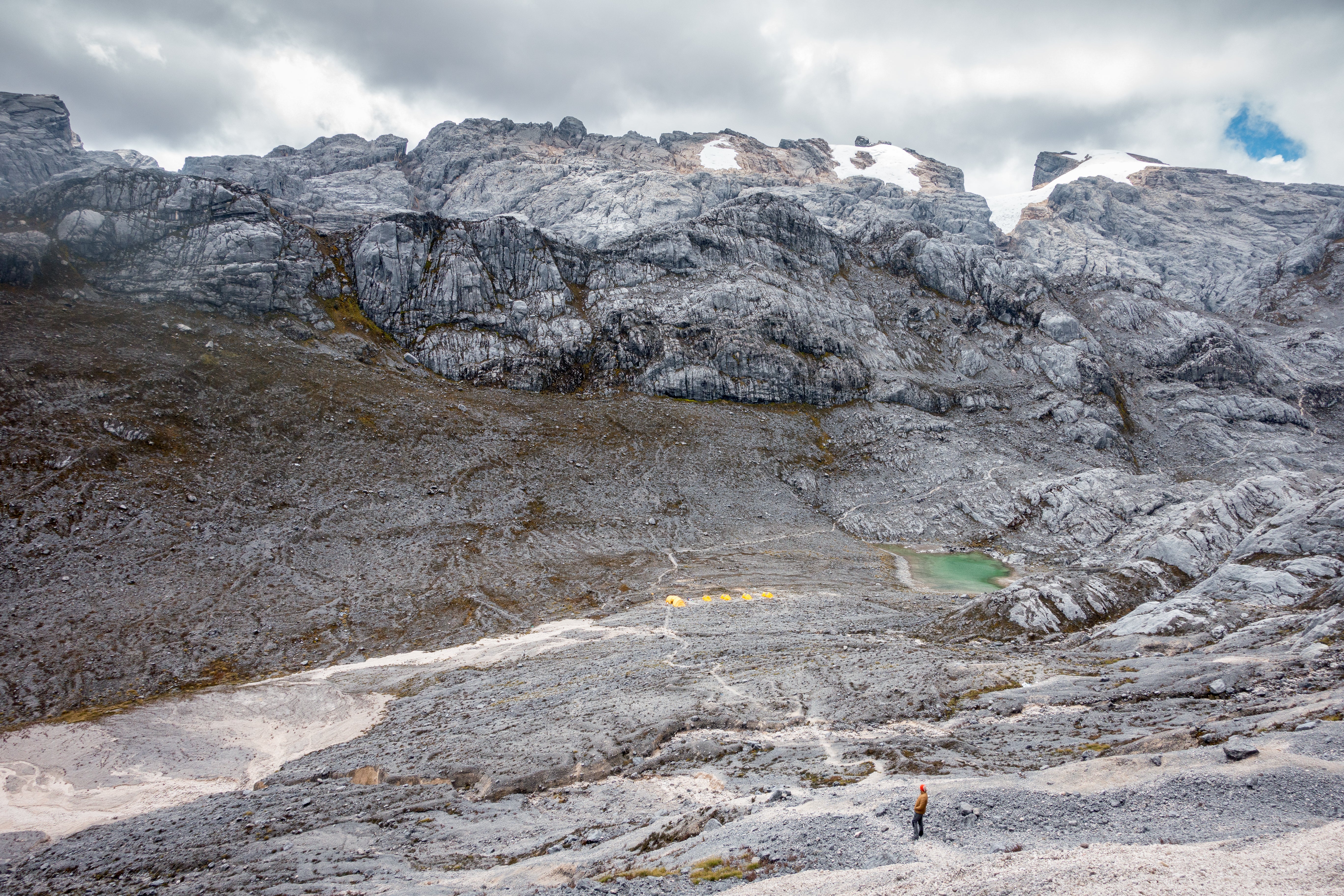Mountaintop glacier ice disappearing by more than 90% in parts of world, study finds
‘They’re early warning systems for the planet, and they all are saying the same thing,’ says lead author of report

Glacier ice on mountaintops in the tropics has receded rapidly over the last 50 years, in one location by more than 90 per cent, a study found.
Using Nasa satellite imagery and data obtained from ice cores drilled during field expeditions, researchers discovered that glaciers – described as the “canaries in the coal mines” for global heating – were melting around the world.
One glacier near Puncak Jaya in Papua New Guinea had lost about 93 per cent of its ice over a 38-year period from 1980 to 2018, while the area covered by glaciers on Mount Kilimanjaro in Tanzania decreased by nearly 71 per cent between 1986 and 2017.
Scientists said the climate change-induced melting was impacting on sources of water for nearby towns and that glaciers had been losing ice more quickly in recent years.
“These are in the most remote parts of our planet – they're not next to big cities, so you don't have a local pollution effect,” said Lonnie Thompson, lead author of the study, professor of Earth Sciences at the Ohio State University and senior research scientist at Ohio State's Byrd Polar and Climate Research Center.
“These glaciers are sentinels, they're early warning systems for the planet, and they all are saying the same thing.”
The study looked at the two glaciers in Papua New Guinea and Tanzania as well as the Andes in Peru and Bolivia and the Tibetan Plateau and Himalayas of Central and South Asia.
One image taken in 2019 of the top of Peru’s Huascarán, the highest tropical mountain in the world, revealed the ice was retreating upslope, leaving the rock beneath exposed.
Researchers at the University of Colorado showed that the glacier ice on top of that mountain had shrunk by nearly 19 per cent from 1970 to 2003.
These glaciers are sentinels, they’re early warning systems for the planet, and they all are saying the same thing
The surface area of the Quelccaya Ice Cap, also in Peru and the second-largest glaciated area in the tropics, had decreased by 46 per cent from 1976 to 2020.
“We are in this unique position where we have ice core records from these mountaintops, and [Nasa’s] Landsat [mission] has these detailed images of the glaciers, and if we combine those two data sets, we see clearly what is happening,” Prof Thompson said.
Co-author Christopher Shuman, associate research professor at the University of Maryland-Baltimore County and associate research scientist at Nasa’s Goddard Space Flight Center in Maryland, added: “You're not sustaining the ice at the highest elevations anymore.
“It's this interplay between the warm air lower down melting away the margins of the ice fields while the very highest elevations are still cold enough to get a certain amount of snowfall, but not enough to sustain the ice cap to the dimensions it once was.
“The science doesn't change the trajectory we're on – regardless of how clear the science is, we need something to happen to change that trajectory.”
The study is published in the journalGlobal and Planetary Change.
Subscribe to Independent Premium to bookmark this article
Want to bookmark your favourite articles and stories to read or reference later? Start your Independent Premium subscription today.

Join our commenting forum
Join thought-provoking conversations, follow other Independent readers and see their replies